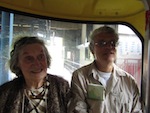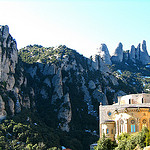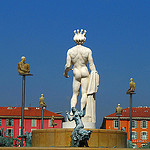The Liberation Route Europe (which follows the movement of the Allied advance through northern Europe in the latter stages of WWII) is complemented by a wide range of shorter memorial trails around towns and villages, which are often laid out as circular walks to commemorate local events.
One of the most famous and interesting of the shorter WWII Remembrance Hike is on the Schumann’s Eck Memorial Trail, designed as a monument to the many victims of the Battle of the Bulge in Luxembourg and eastern Belgium.
During our stay in the historical battle zone, we had a chance of walking along this trail which is located near Nothum on the road from Ettelbruck to Bastogne.
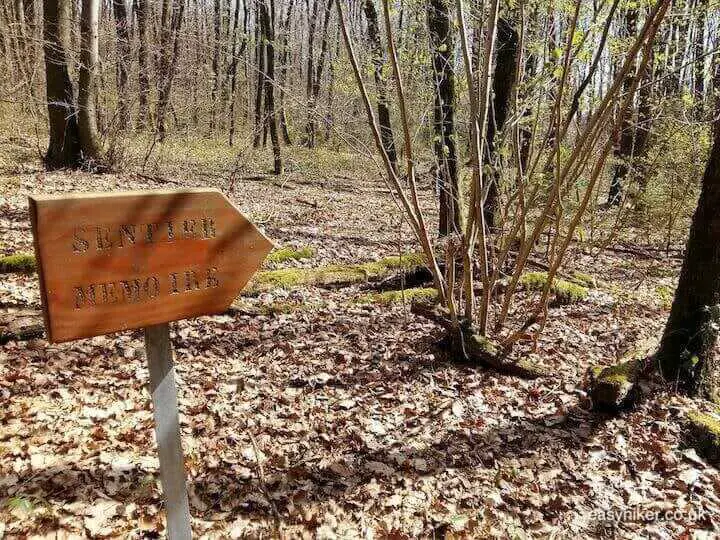
The walk starts at the old location of the Café Schumann, before the war a popular countryside inn and beer garden. The Café Schumann was located near the intersection of two main highways in an area with few roads: that was one reason why it was never short of visitors, but also the ultimate cause of its downfall. Caught in the to and fro of advancing and retreating armies, the café was in the end totally destroyed.
One corner of the building’s remains has been preserved as a National Monument.
A Remembrance Hike from Schumann’s Eck
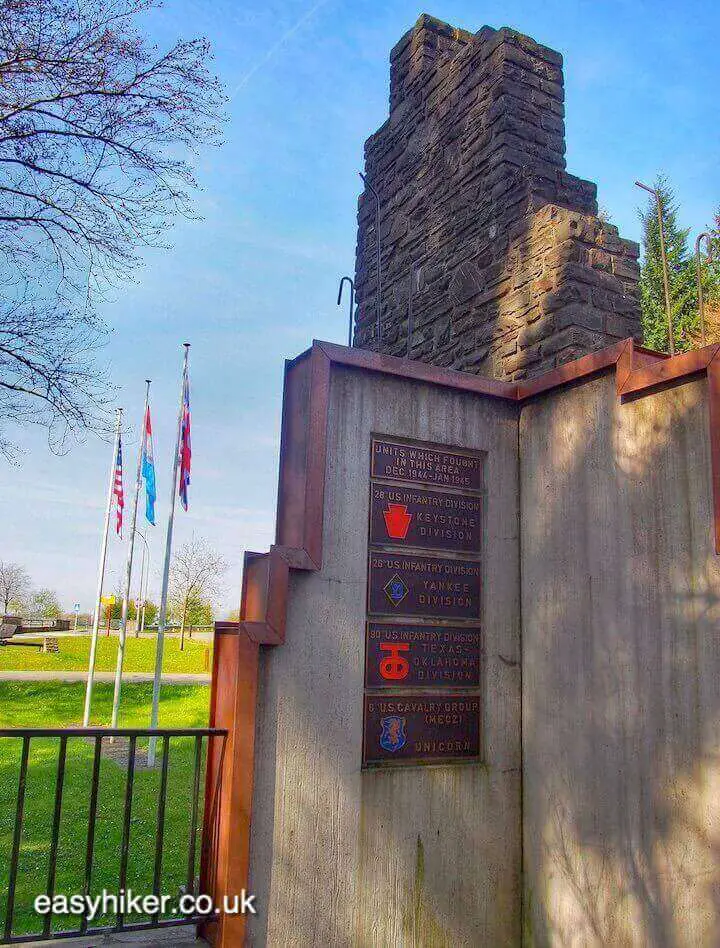
Far more brutal, hand-to-hand combat was taking place in the forest just across the road. On 26 December 1944, Patton’s third US army had driven a wedge of its own into the German wedge, relieving the encircled city of Bastogne.
Now the plan was to extend this corridor, attacking the German besiegers from the rear, but in the way of Patton’s move was the 9th Volksgrenadierdivision.
For two weeks, a bloody battle for this forest ensued, mainly fought from dugouts and foxholes, unstoppable Americans meeting unmovable last-ditch resistance. When the Americans finally took control of the forest on 12 January 1945, thousands of soldiers had lost their lives.
It was the deadliest and most desperately fought action in the entire campaign and the bloodiest battle ever contested on Luxembourg’s soil.
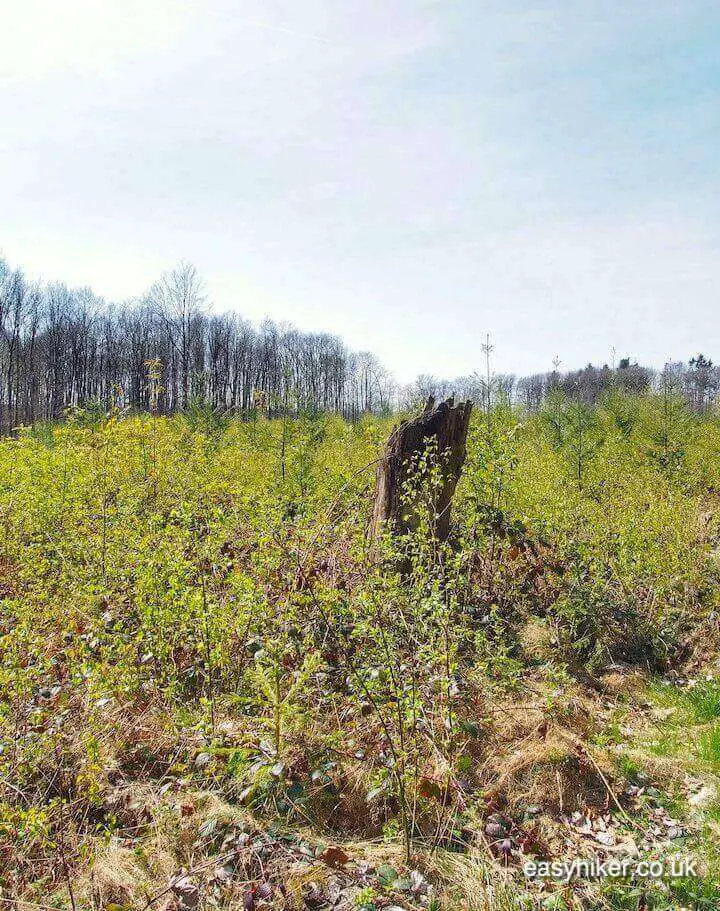
Walk from the Monument to the intersection and turn right (on the road to Bastogne), then take the Memorial Trail footpath (after approx. 200 m) right into the forest.
Shortly after you have entered, you will find the remnants of the Melchior family’s home on your left hand side, but don’t blink or you will miss it.
In the course of the fighting, the house is said to have changed hands 10 times. After the 10th time, all that was left of it is what you see in front of you. If there is a better metaphor for the futility of war, I would very much like to see it.
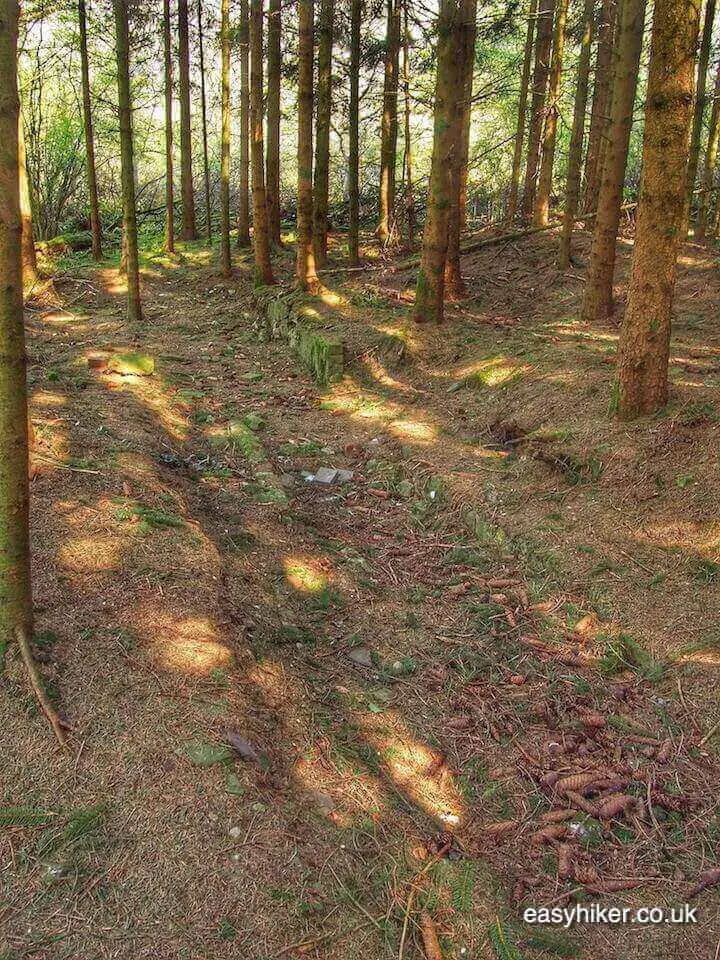
Almost everywhere along the 3 km long trail, you can spot the old foxholes on your left and right.
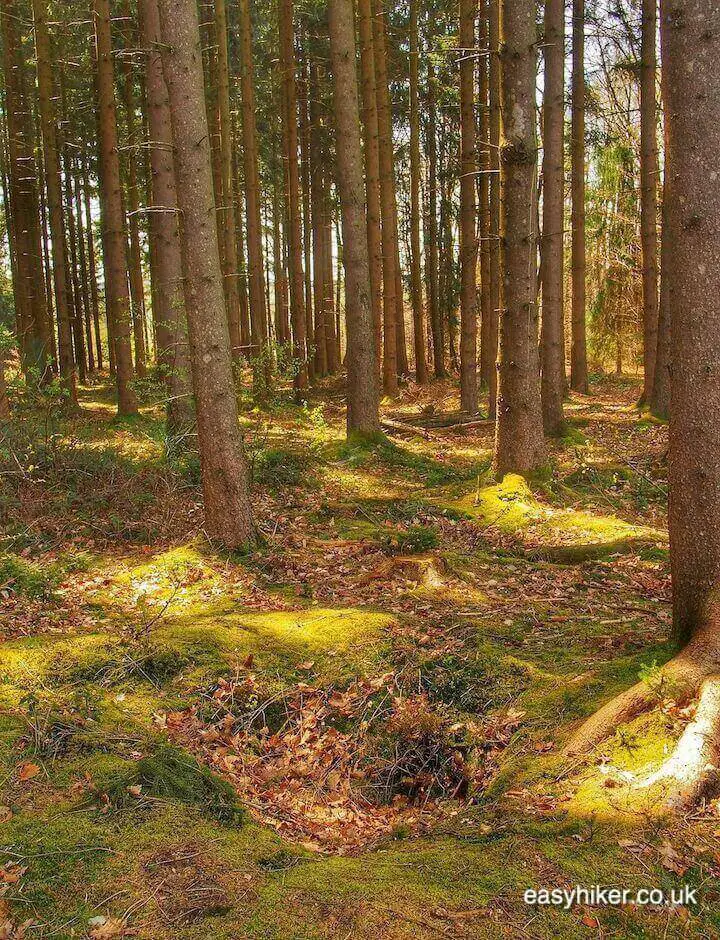
This remembrance hike will bring you to improvised dugouts – half defensive cover, half fighting position – are more important in a dense forest than in any other battle environment: artillery shells explode on impact, which in a forest means that they explode when they hit trees and branches, in the air rather than on the ground.
Before armies learned to protect themselves from this, many soldiers were killed not only by flying shrapnel but also by the air pressure of exploding shells, which, if you are unlucky enough to stand under one of those, can easily blow your lungs apart.
What foxholes cannot protect you from is a direct hit, and there are one or two craters along the way that give you an idea of how devastating the impact of an exploding shell would have been in one of the clearings.
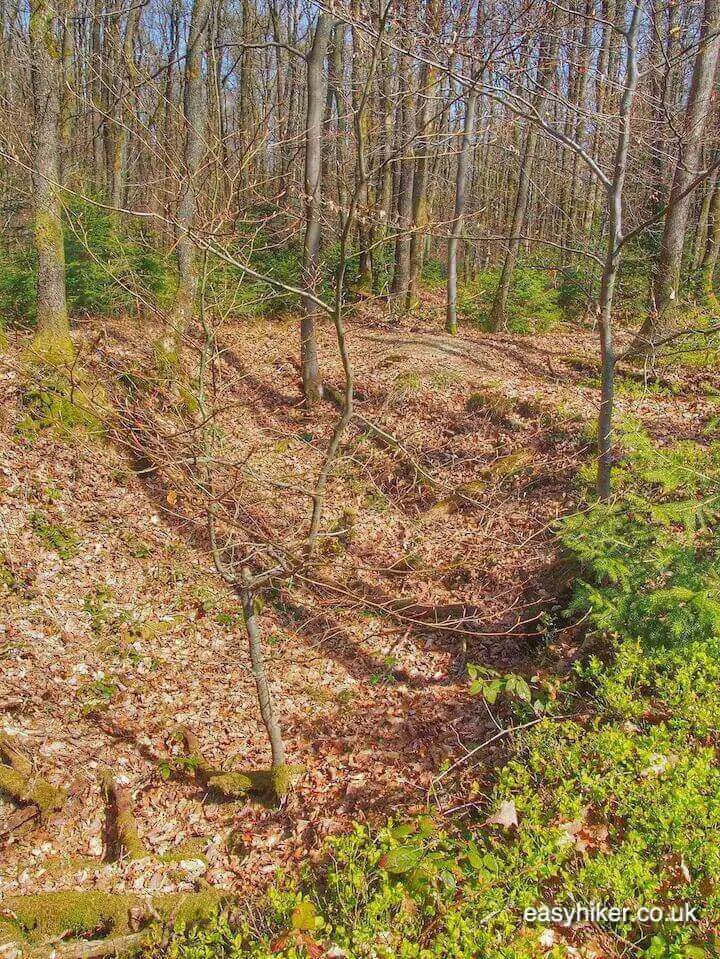
In many places along the trail, picture panels have been placed that try to give you an impression of how the area would have looked like in early 1945.
We must remember that this battle was fought in mid-winter, and that the snow and the cold could be as deadly for the soldiers as enemy fire.
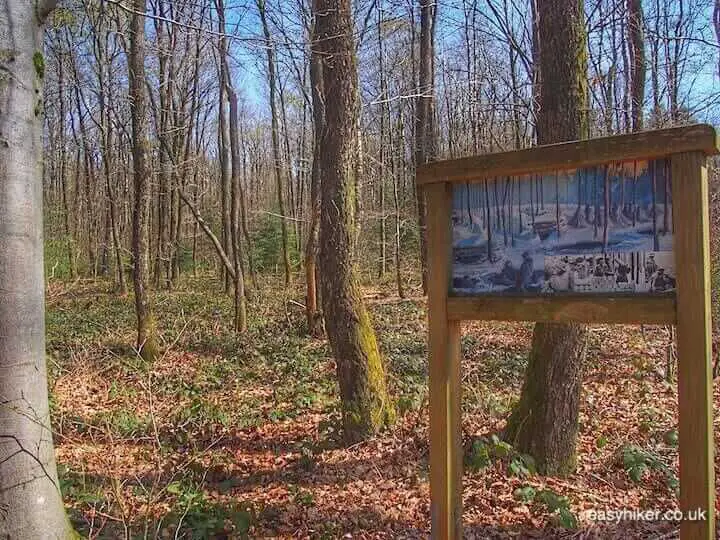
As our guide pointed out: the Americans may have been (at this stage of the war) better equipped and better rested, but the Germans were better adapted to the cold, after years of fighting in Russia.
German soldiers knew how to protect their feet from gangrene, the result of inactivity and the cold, since they had learned from their enemies on the eastern front how to rub their toes regularly with various oils and ointments.
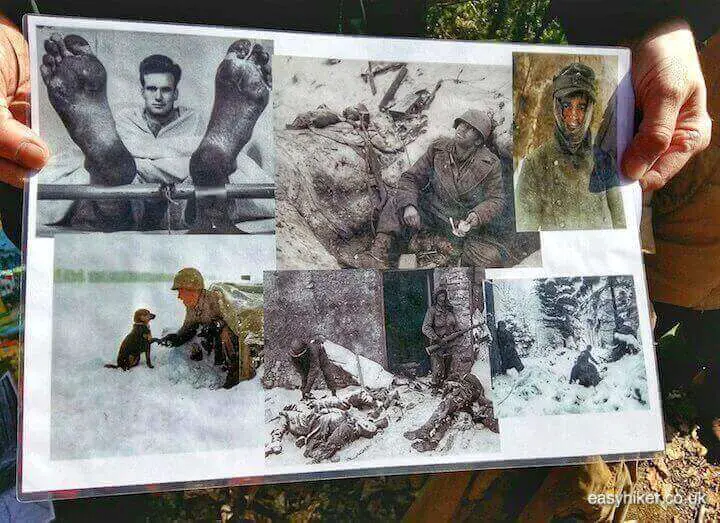
The German uniforms, too, were of superior quality. Our guides gave us coats from either side to try on, and the German ones were twice as heavy.
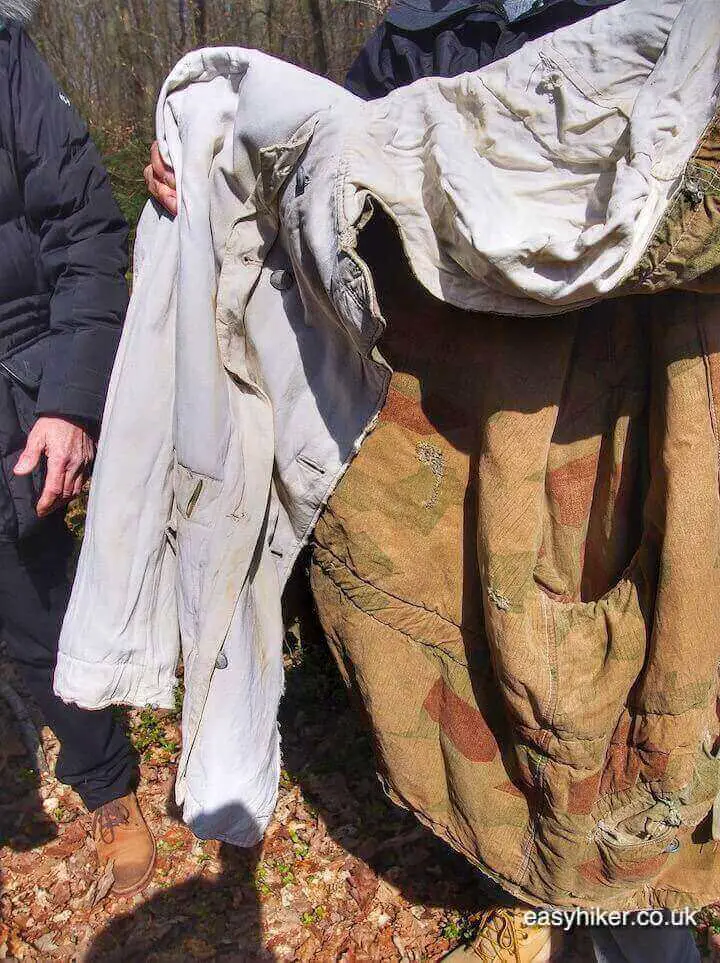
It seems that the Americans, with all their industrial might and virtually unrestricted access to materials, thought it was a good idea to let their soldiers fight this January war in light summer wear, as though the Ardennes forests were the French Riviera.
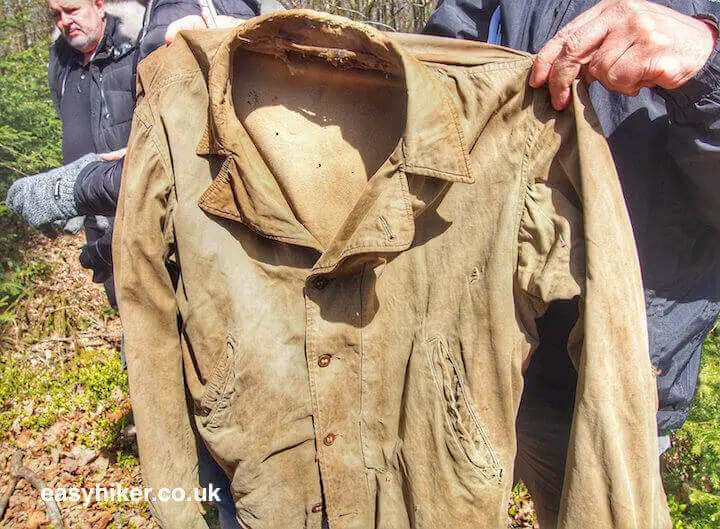
So what did we take home from our short Remembrance hike on the Schumann’s Eck Memorial Trail?
I personally found it worth remembering that long before these woods were turned into the Killing Fields of Western Europe, divided by the frontline between enemy armies: Americans on the left, Germans on the right …
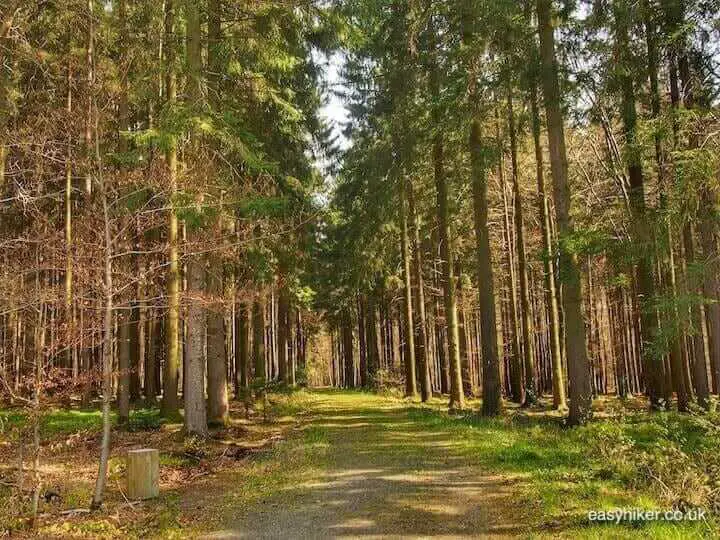
… this frontline was exactly what it is now, a tranquil and peaceful forest path.
In the 1930s, the Melchiors in their soon-to-be-leveled home would no more have foreseen the gathering storm than the merry drinkers at the Cafe Schumann.
Most would have heard about Germany and what was going on there, but probably thought that it did not concern them – well, at least not directly. They would soon find out otherwise.


